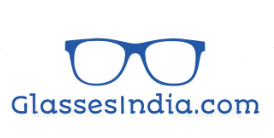In environments where eye safety is paramount, prescription safety glasses are a necessity, not an option. These glasses provide visual correction and protection simultaneously, but how does one navigate the sea of options? This guide will simplify your journey to finding the right prescription safety glasses.
Understanding Prescription Safety Glasses
Prescription safety glasses combine your corrective prescription with safety-rated lenses and frames. They're designed to protect your eyes from various workplace hazards while providing clear vision.
Key Considerations when Choosing Prescription Safety Glasses
Choosing the right safety glasses isn't a one-size-fits-all scenario. It requires an understanding of your unique needs and environment. Here's what to consider:
-
Job Requirements: Evaluate the potential hazards in your work environment. These could be chemicals, dust, or flying debris, among others.
-
Prescription Needs: Ensure that your current vision prescription is incorporated accurately into the safety lenses.
-
Comfort: As with any glasses, comfort is key. The glasses should fit well and not cause any discomfort during prolonged use.
-
Lens Material: This could be polycarbonate, trivex, or glass, depending on your job requirements and personal preference.
Choosing the Right Lens Material
The choice of lens material significantly impacts the durability and safety of your glasses. Here's a quick guide:
-
Polycarbonate: Known for high impact resistance, lightweight, and UV protection.
-
Trivex: Provides similar benefits as polycarbonate but offers better optical clarity.
-
Glass: Less common due to its weight and lower impact resistance, but provides excellent clarity.
The Importance of Fit and Comfort
For safety glasses to be effective, they must fit properly and be comfortable to wear. Here are some points to consider:
-
Frame Size: Should match the size of your face. Too big, and they might slip off; too small, they might pinch and cause discomfort.
-
Nose Bridge: Should sit comfortably on your nose without causing any pressure points.
-
Temple Style: Straight temples are ideal for wearing with helmets, while curved temples provide a better standalone fit.
The Style Factor
Safety doesn't mean you compromise on style. Modern prescription safety glasses come in a variety of styles and colors, allowing you to express your personal taste while staying protected.
Choosing the right prescription safety glasses is a blend of understanding your work environment, knowing your prescription needs, and personal preference. With this guide, you're equipped to make an informed choice that ensures both your eye safety and comfort.

